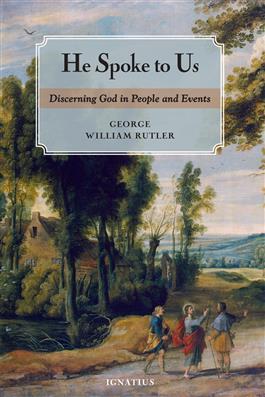Why We Need Lent

Detail from “Christ in the Wilderness” (1872) by Ivan Kramskoy (WikiArt.org)
Why We Need Lent | Fr. George William Rutler | CWR
Lent is a small familiarity with the inexhaustible drama of redemption in which eternity transfigures mortality.
Editor's note: This essay appears in He Spoke to Us: Discerning God’s Will in People and Events , by Father George William Rutler. It was originally published in Crisis Magazine, March 1, 2001.
, by Father George William Rutler. It was originally published in Crisis Magazine, March 1, 2001.
Lenten days bring two images immediately to mind, at least to my own idle mind. The first is of the bishops’ gathering that first established Lent in 325 during the great ecumenical council in the Turkish town of Isnik—then called Nicaea. Some of the bishops there had been mutilated in the persecutions of the emperors Maximin and Licinius. A dubious record says there were 318 bishops in all, but we do know that their fifth canon ordered a time of fasting and penance lasting forty days, which we now call Lent, presumably because Moses, Elijah, and Christ had fasted forty days. There are bishops maimed like those Nicaean bishops today in China, though our government and many corporations have not advertised them. When one of them, Ignatius Cardinal Kung, was released in 1985 after thirty years in prison, he was surprised to learn that the Church’s Friday meat abstinence had been changed. Evidently he did not think this an improvement. While his internment had been a perpetual Lent, he thought the mortifications of his brethren in the West had been sustaining him. In fact, it had been the other way around.
The bishops of Nicaea knew the consequences of mortification, the grief of it when inflicted, and the grace of it when voluntarily assumed. So they extended to forty days what first had been a penitential period of three days before Easter. The season was catechetical as well as penitential, preparing catechumens for baptism and collaterally instructing all the faithful. Over the years, the nature of the Lenten fasts and penances varied, and not until the seventh century in the West was Ash Wednesday added so that Lent might last the full forty days if Sundays were exempted. As early as the time of the Council of Nicaea, however, the Church in Jerusalem had kept Lent for eight five-day weeks. The word “Lent” comes from the Old English lencten, after the season of spring with its lengthening daylight. Christians, bringing to fulfillment an instinct of most religions, have known that some period of mortification as a “prayer of the senses” serves as a prelude to a spiritual rebirth.
The second image that comes to mind when I think of Lent is that of the Church of Saint George in Velabro along the Roman Forum. Unlike the Church in Jerusalem, whose own altars fasted on the weekdays of Lent by forgoing the liturgy, the Church in Rome celebrated Mass every day of Lent and with special ceremony. At the end of their workday, the faithful would gather around the bishop of Rome and his deacons in procession to a church appointed for the day. The Church of Saint George was the station church for the first day after Ash Wednesday, and since Saint George is the patron of soldiers, the traditional gospel reading for that Thursday was about the centurion who asked Christ to heal his servant. To that church in the course of his tumultuous pontificate during the eleventh century, Pope Urban II brought a portion of the skull of the great martyr George. Others of his relics are entombed outside what is now the entrance to the Ben Gurion Airport in Israel.
When I was living in Rome some years ago, it fell to my lot to preach each year at Saint George on the Lenten station day, beginning when I was a deacon. By then, George’s official status on the Church calendar had been reduced in the neuralgic spirit of the late 1960s, though he continues to be the most honored saint—except for Mary—in many Christian nations. And of course, like the Nicaean bishops in their endurance, the survivors of Soviet Russia have restored Saint George to their banners, and a new Church of Saint George the Mega-Martyr shines in the sun across Red Square from the sullen tomb of Lenin the Martyrer. Ostpolitik is gone, and Saint George remains.
Lenten lightweights
All this is by way of saying that Lent is not for the fey. That is because Christianity is not for them, either.
Carl E. Olson's Blog
- Carl E. Olson's profile
- 20 followers



